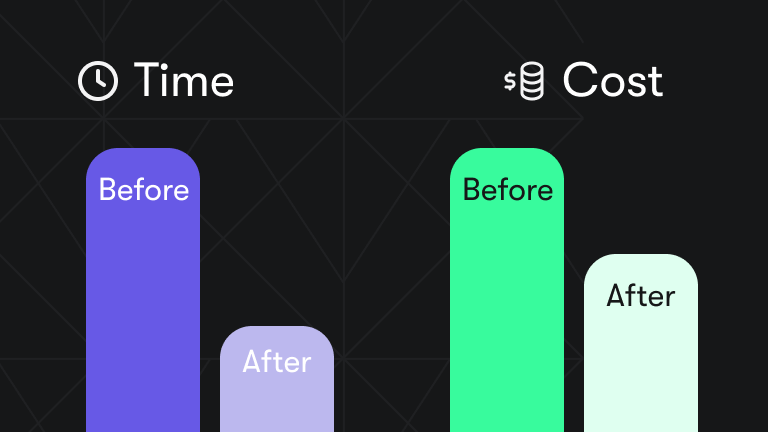It’s an axiom that rings true across the business world: time is money. The connection between the two is especially apparent for sales teams. Salespeople’s job descriptions often include monthly quotes, i.e. an amount of money one needs to earn for the company in a prescribed amount of time.
It’s important, then, to find ways to eliminate the tedium inherent in most sales agents’ typical daily schedule. Luckily, there’s an easy way to accomplish this: it’s called sales automation.
What is Sales Automation?
Put simply, sales automation is the transferral of responsibility for mundane tasks from human sales agents to preprogrammed bots. In fact, much of the busy work sales agents engage in on a daily basis can be performed by bots — everything from sending follow-up emails to prospects to recording relevant information about a contact as soon as an agent hangs up the phone. This kind of automation allows sales team members to shed the burden of busy work and focus fully on those tasks that really help their companies grow. Many businesses also consider clay alternatives to find the best fit for their workflow.
Customer service software is generally used for customer support purposes; however, it can also be used by different sales teams within one organization.
Customer service software integrates with common customer communication channels such as email, phone/internet Phone Service, live chat, social media, messaging applications, and even customer service websites. When a client contacts your company through one of these channels, the system produces a ticket for them. For instance, the system will respond automatically if a client utilizes a real-time channel, such as the phone or live chat. If a client utilizes a real-time channel, such as the phone or live chat, the system will instantly begin ringing to inform online support personnel.
Having a system like this helps your organization or sales team improve their customer communication operations by removing the need for device and account monitoring by storing all communications in one location. It saves time, increases productivity, and shortens response times, all of which lead to higher customer satisfaction. There are many customer service software options that can help you with it.
Benefits of Sales Automation
- Saving costs and time: By using bots to handle certain mundane tasks, sales automation lets agents focus on their most important work. That work will, of course, take less time overall if routine tasks are automated. Cost-wise, the company can save on employee wages and have a higher level of job satisfaction among team members if people are only asked to do interesting, engaging tasks fit for a competent (human) worker.
- Elimination of repetitive tasks: Nobody likes doing the same boring task over and over again. Too much of that and you’ll feel like a cog in a machine — dehumanized. Why not leave those types of tasks to actual non-humans, i.e. bots? Doing so will save you and your team bundles of time, which you can rededicate to more meaningful work. For example, CRM automation lets intelligent bots handle repetitive admin work, you and your team can save hours and refocus on more meaningful, human-driven tasks.

- Improving team performance and productivity: Just as an individual's productivity is increased by the automation of routine tasks, so too can the overall productivity of your sales team be increased. Implementing simple automations can take the burden of busy work off your employees’ shoulders and allow them to be more engaged with their work, and thus more productive. Integrating a performance management system can help track these improvements and ensure the team remains aligned with broader performance goals.
- Better data quality and accuracy: As much as we’d like to deny it, we’re all prone to making errors from time to time — it’s only human. You know who doesn’t make errors though? Bots. By dint of their running on algorithms as opposed to caffeine, they can tackle any and all repetitive tasks you might have. Your output, naturally, will be high-quality and error-free.
- Opportunity to focus on value-added tasks: All tasks are important, yes, but I think we’d all agree that some are more important than others. Some have tangible downstream effects on the success or failures of a business, and others, well… are adding row after row to a Google spreadsheet as your soul slowly leaves your body. With sales automation, you can leave those kinds of busy work tasks to bots while your team members focus on only the most crucial, value-added tasks.
- 24/7 connection with the customer: Sales automation allows you to set up all sorts of helpful communications triggers that will make your customers feel like you’re there for them no matter the hour. For example, you can set up automatic SMS replies when customers reach out via the customer chat function during off hours. These messages can be prescription for a variety of situations, and will give your customers peace of mind knowing that their questions or concerns will be attended to by a live representative at the start of the next working day. Moreover, by automating routine tasks and allowing sales agents to focus on value-added tasks, sales automation can lead to better customer satisfaction scores, as the team members have more time to engage with customers and respond to their needs effectively.
Below we’ll get into some examples of how you can effectively automate your sales process.

6 Ideas for how you can automate your sales process
1. Automation that helps you to better store existing and new customer information
Staying organized can be a challenge for any business, especially those that handle a lot of customer data. Robotic Process Automation, or RPA, uses bots to complete simple, logic-based tasks; the kinds of organizational housekeeping tasks that are necessary for your business to process data smoothly but are horribly boring. With RPA, you can define a set of triggers — say, classifying different categories of data — and have a bot complete the task for you. This way, your employees can spend less time tagging data sets and moving files from one location to another and more time on tasks that will help your business grow.
Chris Masanto, the CEO and co-founder of PetLab Co., says, "At PetLab, our leap into automating the storage of customer information transformed how we engage with both new and existing customers. By seamlessly integrating automation into our sales processes, we've made every customer feel uniquely valued. This shift allowed us to tailor our interactions based on precise customer insights, leading to more meaningful connections and a notable increase in sales conversions. It clearly demonstrates that when you prioritize efficiency in managing customer data, the return is a deeper relationship with your audience and a direct path to driving real business results."
2. Automation of processing invoices and orders
RPA also comes in handy when processing orders and invoices. With just a few clicks, you can set up triggers that will automate sales orders and generate invoices in the blink of an eye. Better yet, the use of bots will save your employees the trouble of manually entering data — and ensure error-free output to boot.
3. Automated sales emails and follow-ups
Sales agents juggle a lot of responsibilities simultaneously, and it can be easy to forget certain routine but important tasks, such as sending follow-up emails to leads. RPA can automatically send out follow-up emails according to certain time-sensitive triggers. For example, three days after a demo session with a potential client, an RPA trigger could send out a follow-up email asking the client if they’ve had time to think about your product and would like to discuss next steps. Automation of this kind can help sales agents efficiently nurture more leads than ever, and take your business to new heights.
4. Automation of sales calls
All call centers — and especially the busy ones — can benefit from the use of RPA in their sales call process. There are plenty of companies out there hawking new-age Contact center solutions, but few that seamlessly incorporate RPA functionality in their cloud contact center product. Here are two features that you should look out for as signs of a call center system having a well-developed suite of features:
- Predictive dialer features can save your agents manually dialing phone number after phone number in hopes of a response. Predictive dialers automatically move from number to number, ringing for only as long as you’ve programmed it to, until your agent gets a response.
- IVR (Interactive Voice Response) features also stand out. You can use call flow designers to easily create custom IVR chains that will guide your customer to the correct information, department or agent, every time. Moreover, a *call recorder* app can be integrated into the system, allowing agents to easily record calls for later review and analysis, improving training and performance tracking.
5. Automated customer onboarding process
Finally converting a lead after days if not weeks of nurturing is a great feeling, a weight off one’s shoulders. But what about the customer onboarding process? Some sales agents can get caught up in the thrill of closing their next deal and forget to carry out necessary onboarding steps for their previous customers. Instead of hiring another employee to explicitly oversee customer onboarding, why not automate the process? RPA can not only send out pre-scripted onboarding emails to your customers detailing next steps, it can also set reminders for your sales agents, nudging them to engage with customers personally and make them feel at home with your product. Additionally, it can work alongside an appointment reminder app to ensure timely follow-ups and seamless scheduling, enhancing the overall customer experience.
6. Automating CRM data entry
CRM interfaces can be tedious to navigate through, even for the most seasoned of sales agents. The task is made even more cumbersome if, after wading through page after page of your CRM interface, you arrive at your ultimate landing page only to begin inputting row after row of data into a spreadsheet. Luckily, RPA can relieve you of all of that trouble by automating the data entry process. When a sales agent hangs up with a client, for example, an RPA action can be triggered to record important data from the call such as call duration, agent name and categorization tag. All automatic and error free.
The Bottom Line
By now you probably get the idea: automation of rote, time-consuming tasks can not only save your company time and money, it can also save your employees their sanity. Nobody likes busy work, and tools like RPA help take it off your plate. It’s liberating, really, to be able to fully dedicate your time and effort to those tasks that require creativity and ingenuity. If some of the ideas for sales automation laid out in this article have sparked your interest in RPA tools, you can explore a range of such tools in the Apify store.
At Apify, we’re constantly thinking of ways to improve our product and give our customers exactly what they’re looking for. If you’ve got an idea for a new web scraping or automation Actor, or want to use the power of your upvote to see an existing suggestion become a reality, please take a look at our Ideas page.
Quinn Malloy, editor at CloudTalk








